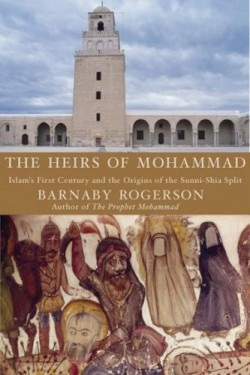The Heirs of Muhammad
Islam's First Century and the Origins of the Sunni-Shia Split
Recent explosions, assassinations, and kidnappings in Iraq are the latest gruesome outgrowths of the fourteen-centuries-old divide between Sunni and Shia Muslims, which began in the wake of the Prophet Muhammad’s death in the year 632. Shia Muslims share with the majority Sunnis the central tenets of Islamic faith—including veneration of Muhammad as the last Prophet from the God of Abraham and Jesus—but differ in their legal customs and their steadfast belief that Muhammad’s family line was best suited to succeed him after he passed away. It has been difficult for the general reader to learn the full story behind this schism. Books on the topic often either rely on stereotypes and shallow analogies, thus failing to capture the intensity of the era, or slide into excessive erudition, thus missing the forest for the trees.
The author successfully avoids both extremes. This new work stands as one of the most readable and engrossing descriptions of Islam’s swift seventh-century expansion across the Middle East and North Africa, the personalities who oversaw the community’s growth, and the genesis of the Sunni—Shia split. Rogerson—who has written a biography of Muhammad and several travel-related books on North Africa—brings these momentous times alive through colorful prose, keeping the book extremely accessible to the general reader. His delicate balance of the Sunni and Shia narratives reflects his accomplished efforts “to honour both traditions and to sit like a tailor darning together two pieces of cloth into one.”
The first section covers Muhammad’s relationships with his closest companions, including his wives and the men who would become the first four Caliphs, or “successors,” after the Prophet’s death: Abu Bakr, Omar, Uthman, and Muhammad’s cousin and son-in-law Ali. Special attention is given to Muhammad’s favorite wife Aisha and her relationships with each of these future caliphs. Rogerson skillfully tells how generations of Muslim legal scholars used a few Quranic verses that appear to focus rather specifically on the conditions of Muhammad’s household in Medina to constrain Muslim women in ways that have remained in force in some regions for centuries. Conveying the remarkable agreement between Sunni and Shia Muslims when it comes to the life of Muhammad, Rogerson also points out that differences between their two accounts begin at the moment of the Prophet’s death. Sunnis believe that Muhammad left this world with his head in the lap of Aisha; Shia claim that he passed away in the arms of Ali. Rogerson asserts that both could literally be true.
The rest of the book chronicles the all-too-few decades that passed before rising tensions within the rapidly expanding Islamic community dashed these hopes for unity and harmony. Rogerson brings the epic times of Islam’s spread under the four “rightly guided” caliphs alive with tales of clashing personalities and political intrigue. The subtext throughout is the belief among many Muslims (who later became the minority Shia) that Ali—due to his bloodlines and his close ties to the Prophet—was the natural heir to Muhammad’s place at the head of the Islamic community. Shia still rankle at the early Muslims’ willingness to grant leadership status instead to three others before finally selecting Ali in 656. Rogerson’s prose captures the ratcheting tension that led to outright war when Aisha led a rebellion against Ali, a fateful conflict that led to Ali’s death in 661 and eventually the disastrous Sunni—Shia schism.
Rogerson tells stories that both educate and fascinate. His chapter on the weapons, equipment, and tactics of the Muslim army, for example, rewards the reader with its rich detail. He dispels the notion that Muslim armies rode camels during combat. Instead, Arab soldiers often entered skirmishes on horses—which the warriors kept fresh for battle by encumbering camels instead during marches across vast distances. Rogerson also thoughtfully includes list of key dates and characters, nine original maps, and seven tables—which help clarify the intertwined family trees of Muhammad and his companions.
The book’s very success exposes its only real shortcoming. By drawing readers so effectively into the personalities and crucial events of Islam’s earlier years, Rogerson certainly will spur some readers to seek out his sources. Although the book includes a useful seven-page list of books that address topics ranging from Islamic theology to frankincense and myrrh, it lacks footnotes or endnotes to tell the inquisitive reader the sources for the specific facts that make this book such a fruitful volume. Nevertheless, Rogerson’s skill at making such a complicated history understandable leaves readers with a valuable account of the intra-Muslim divide that will appeal to those interested in learning more about the roots of some of today’s most intractable conflicts.
Reviewed by
David Priess
Disclosure: This article is not an endorsement, but a review. The publisher of this book provided free copies of the book to have their book reviewed by a professional reviewer. No fee was paid by the publisher for this review. Foreword Reviews only recommends books that we love. Foreword Magazine, Inc. is disclosing this in accordance with the Federal Trade Commission’s 16 CFR, Part 255.

